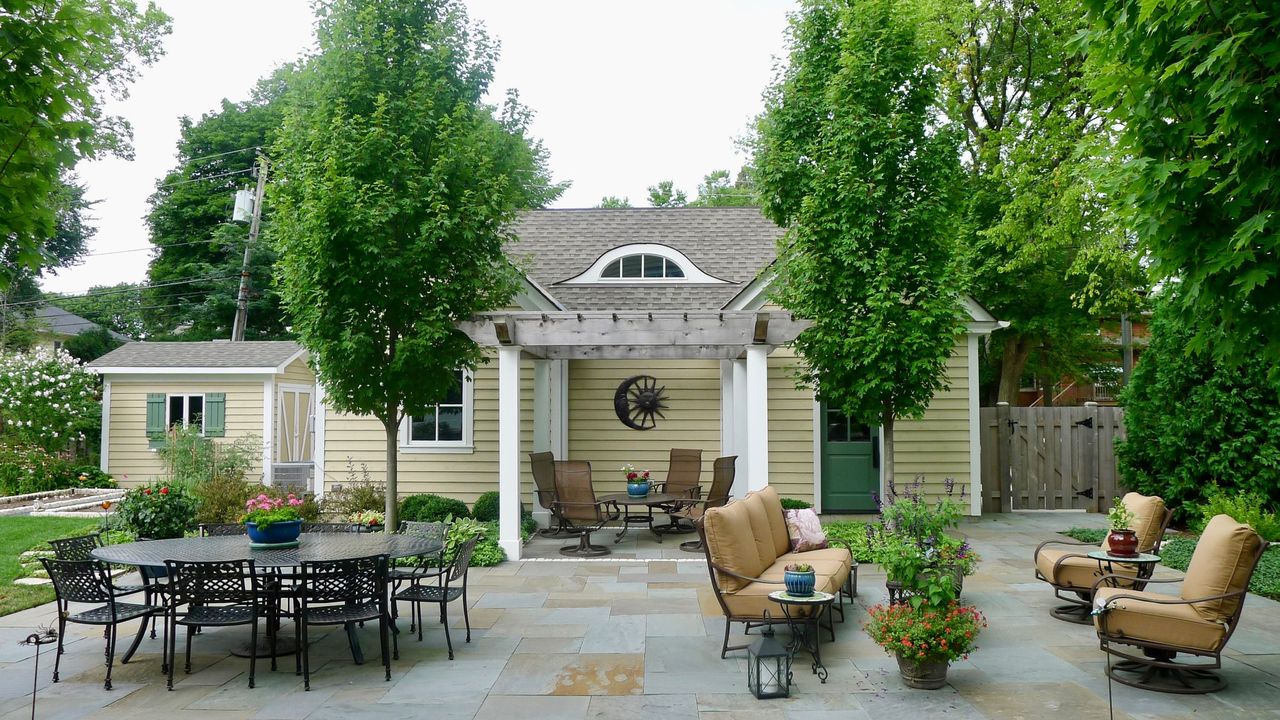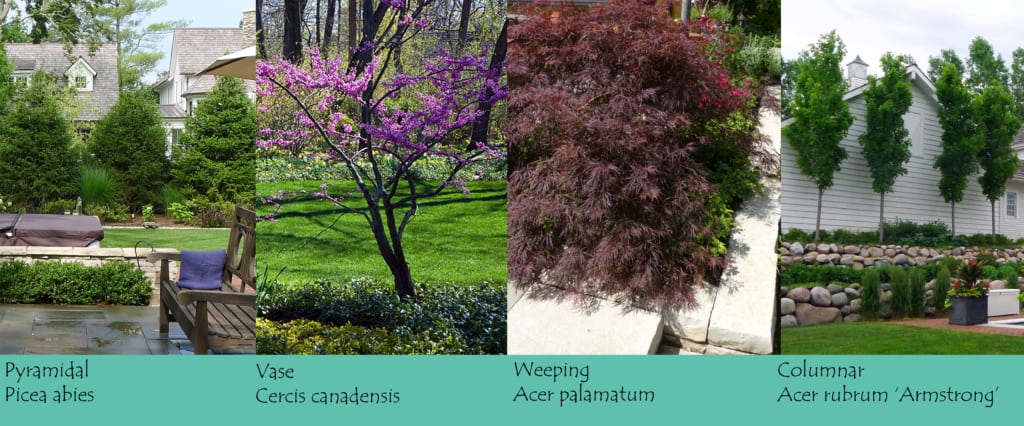Have you ever seen a tree or shrub planted too close to a house or structure that it has to be pruned back so hard it loses its natural form? I have many times. All trees come in different shapes and sizes. It’s important to do your research before planting them so your tree can grow into a perfect specimen for that space. Here’s are a list of a few tree habits along with some examples that fit that form.
Pyramidal
(Photo: Picea Abies, Norway Spruce). These trees are known for their dense, large habit that do a terrific job creating privacy, blocking undesirable views, or used as windbreaks. They need room to grow though so don’t plant them in a tight location. Reaching near 40’ to 60 ‘in height and 25 to 30’ in width they are definitely in the large tree category! Known for being fast growers when young, their stiff pendulous branches turn into graceful mature branches later in life. Other pyramidal shaped trees include: Betula populifolia ‘Whitespire’ (Whitespire Birch), Pyrus calleryana Chanticleer (Chanticleer Pear), Tilia cordata Greenspire (Greenspire Littleleaf Linden).
Vase
(Photo: Cercis candansis, Eastern Redbud). This naturalistic small tree can stand alone or be planted in a grouping along a woodlands edge. The vase shaped, airy form makes it perfect near a patio or walkway too because the branches grow upward not outward. It’s multi stemmed trunk makes every tree unique. One of my favorite characteristics is it’s broad heart shaped leaves! Redbuds are one of our top choices for ornamental trees in a residential setting. Other vase shaped trees include: Acer palmatum ‘Bloodgood’ (Bloodgood Japanese Maple), Amelanchier canadensis (Shadblow Serviceberry), Malus Red Jewel (Red Jewel Crapapple).
Weeping
(Photo: Acer palamatum, Cutleaf Japanese Maple). This tree makes a dramatic statement in a garden and creates a perfect focal point. The purple tinted leaves of the Japanese Maple jump out from all the other green foliage that surrounds it. Plant it near a retaining wall and let the weeping branches cascade over the stone wall to soften the edges. A great companion plant to its airy, soft leaves would be a large leafed Hosta, like ‘Guacamole’ or ‘Big Daddy’. Other weeping shaped trees include: Fagus sylvatica ‘Purple Fountain’ (Purple Fountain Beech), Cercidiphyllum japonicum ‘Pendula’ (Weeping Katsura Tree), Pinus strobus ‘Pendula’ (Weeping White Pine).
Columnar
(Photo: Acer rubrum ‘Armstrong’). Most ideal tree for a narrow space! Highly used along fences and property lines because of its ability to create a barrier while not leaving a large footprint. Most columnar trees branches don’t grow all the way down to the ground so it allows room for understory planting. Other columnar shaped trees include: Carpinus betulus ‘Fastigiata’ (European Hornbeam), Fagus sylvatica ‘Fastigiata’ (Columnar European Beech), Quercus robur ‘Fastigiata’ (Columnar English Oak).

